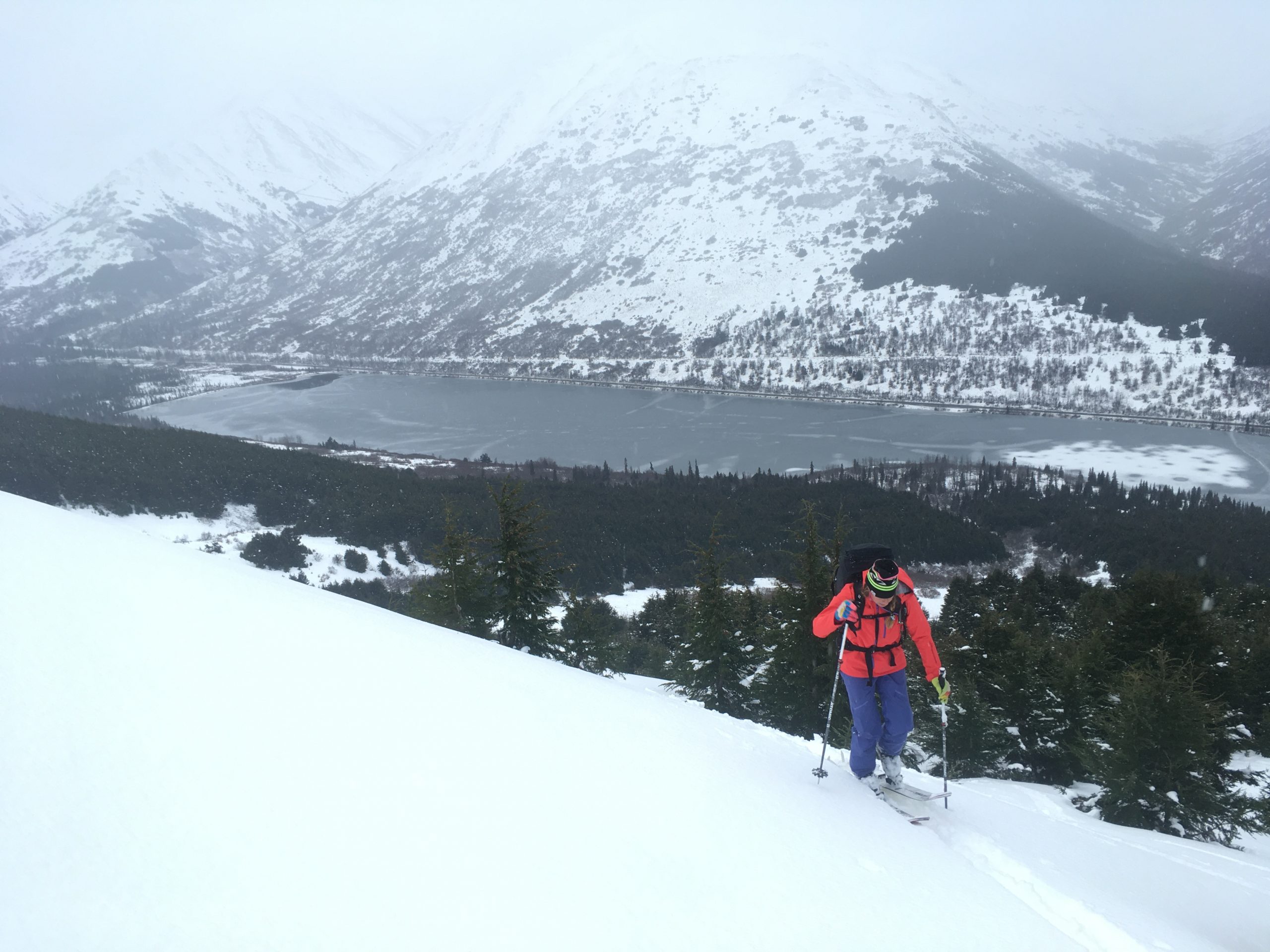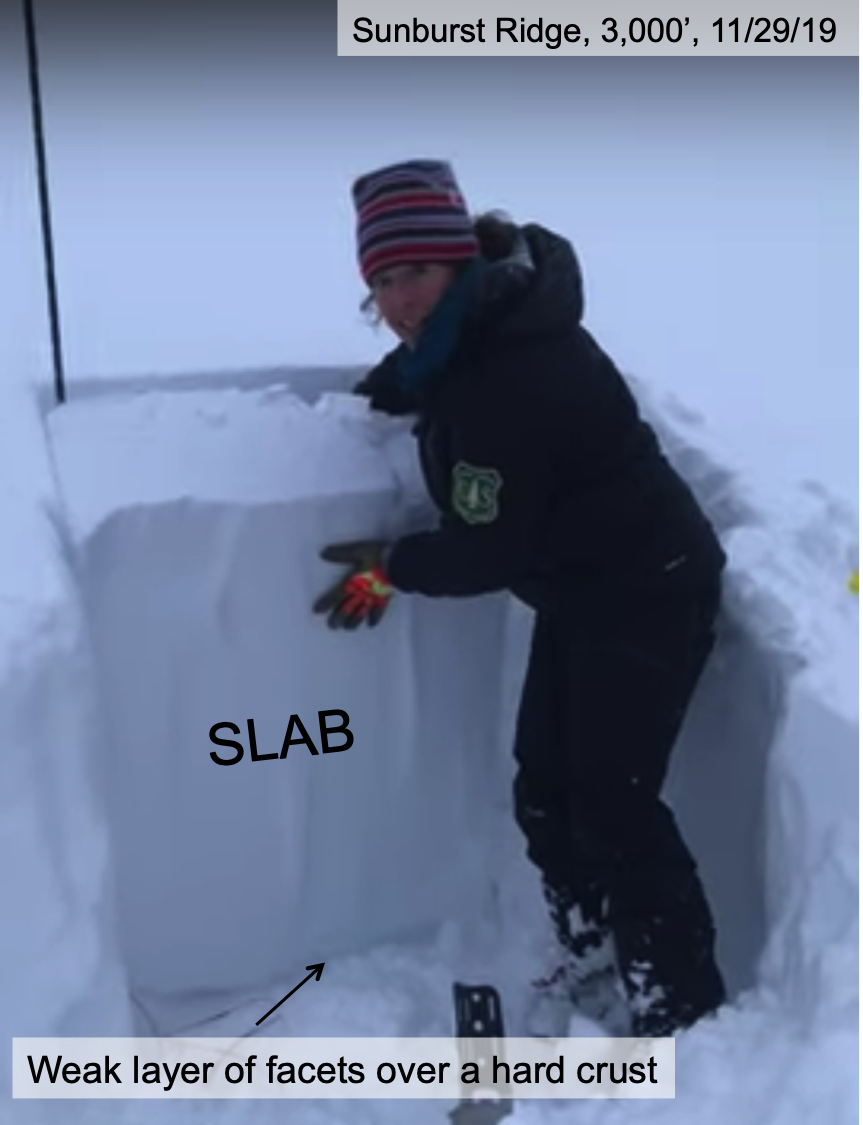Turnagain Pass
|
|
A MODERATE avalanche danger exists in the Turnagain Pass region above 2,500′. A few inches of new snow (2-5″) with moderate winds are expected to form small fresh wind slabs along the higher ridgelines by this afternoon. Additionally, a much larger avalanche may be possible to trigger above 3,000′ due to a suspected weak layer 1-3 feet below the snow surface.
Headed to Hatcher Pass? Don’t forget to check hpavalanche.org and their Facebook page!
Tuesday, Dec 3rd: Turnagain Pass – Snow, Weather and Avalanches @ Ski AK
6:30pm – 8:00pm. Cost FREE!
Join CNFAIC forecasters for a look under the hood at the avalanche center. We’ll discuss current Turnagain Pass snow and avalanche conditions, how avalanche forecasts are produced and some tips on being your own avalanche forecaster.

 Alaska Avalanche School instructor Brooke Edwards climbs to
Alaska Avalanche School instructor Brooke Edwards climbs to 